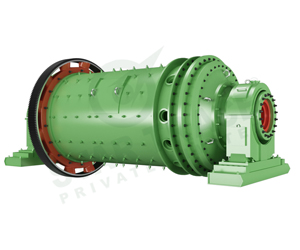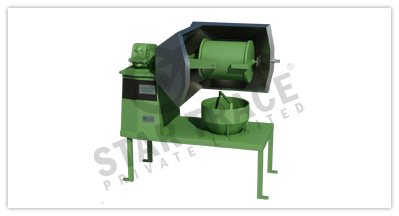
Laboratory Rod Mill

A rotating drum causes friction and attrition between steel rods and ore particles. But note that the term 'rod mill' is also used as a synonym for a slitting mill, which makes rods of iron or other metal. Rod mills are less common than ball mills for grinding minerals.
The rods used in the mill, usually a high-carbon steel, can vary in both the length and the diameter. However, the smaller the rods, the larger is the total surface area and hence, the greater the grinding efficiency.
Technical Specification:
Model |
Uite |
STRM-160/200 |
STRM-200/400 |
STRM-240/300 |
|||||||
Cylinder size |
mm |
160/200 |
200/240 |
240/300 |
|||||||
Volume |
L |
4.02 |
7.5 |
13.57 |
|||||||
Capacity |
g |
300-800 |
500-1000 |
1000-5000 |
|||||||
Feed size |
mm |
2 |
2 |
3 |
|||||||
Product size |
mm |
0.074 |
0.074 |
0.074 |
|||||||
Drum speed |
r/min |
120 |
110 |
96 |
|||||||
Power |
kw |
0.25 |
0.55 |
0.55 |
|||||||
The grinding medium |
Steel bar |
diameter |
Mm |
18 |
20 |
15 |
18 |
22 |
15 |
18 |
22 |
The length |
Mm |
185 |
225 |
286 |
|||||||
quantity |
The root |
10 |
9 |
17 |
9 |
9 |
33 |
13 |
6 |
||
weight |
Kg |
3.55 |
4.09 |
4.9 |
4.2 |
4.9 |
12.7 |
7.48 |
5.0 |
||
Overall dimensions |
mm |
1052/530/1160 |
1052/615/1160 |
1052/615/1160 |
|||||||
Weight |
kg |
91 |
150 |
162 |
|||||||
Work Index Rod Mill

For finding the work index during Rod milling as per invention of F. C. Bond.
As per the standard procedure the feed is crushed to -1/2" and 1250 CC packed in a graduated cylinder are weighed, a representative sample is screen analysed. The weighed sample is ground duly in closed circuit with 100 percent circulating load in a 12" x 24" long tilting Rod Mill with a wave-type lining and revolution counter, running at 46 r.p.m.. The Grinding charge consists of Six 1.25" Dia and two 1.75" Dia steel rods of 21" long and weighing 33,380 Grams.
The rods used in the mill, usually a high-carbon steel, can vary in both the length and the diameter. However, the smaller the rods, the larger is the total surface area and hence, the greater the grinding efficiency.
